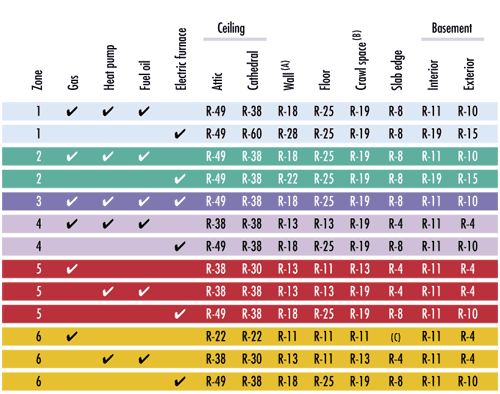The higher the r value the better the thermal performance of the insulation.
Attic insulation depth r value.
R value is a measure of insulation s ability to resist heat flow.
As a benchmark one inch of solid wood has an r value of 1.
You can achieve better thermal performance in your attic by adding an additional layer of insulation.
Light weight yellow pink or white.
Achieving greater r values in exterior walls.
These r values are a sum meaning this should be the total r value once you add up the entire depth of insulation.
Foam in place insulation can be blown into walls on attic surfaces or under floors to insulate and reduce air leakage.
Insulation levels are specified by r value.
The table below shows what levels of insulation are cost effective for different climates and.
For example if you have a type of insulation that has an r value of r 5 per inch of thickness you will need a depth of 6 inches of this insulation installed your attic to reach r 30 if you live in zones 2 or 3.
Along with knowing the r value of a particular insulation it is also important to calculate the r value of a total system.
Add the right kind of insulation.
The total r value of installed insulation is calculated by multiplying its baseline r value times the depth of the insulation in inches.
Dense gray or near white may have black specs.
Fiberglass 2 5 x depth.
Recommended home insulation r values.
In comparison an inch of blown fiberglass insulation has an r value of 3 1 3 4 and an inch of blown cellulose in an attic has an r value of 3 2 3 7.
R value is a measure of insulation s ability to resist heat traveling through it.
The higher the r value the better the thermal performance of the insulation.
Cellulose insulation has a baseline r value of 3 8 per inch.
The recommended level for most attics is to insulate to r 38 or about 10 to 14 inches depending on insulation type.
Insulation level are specified by r value.
You can use the small pressurized cans of foam.

